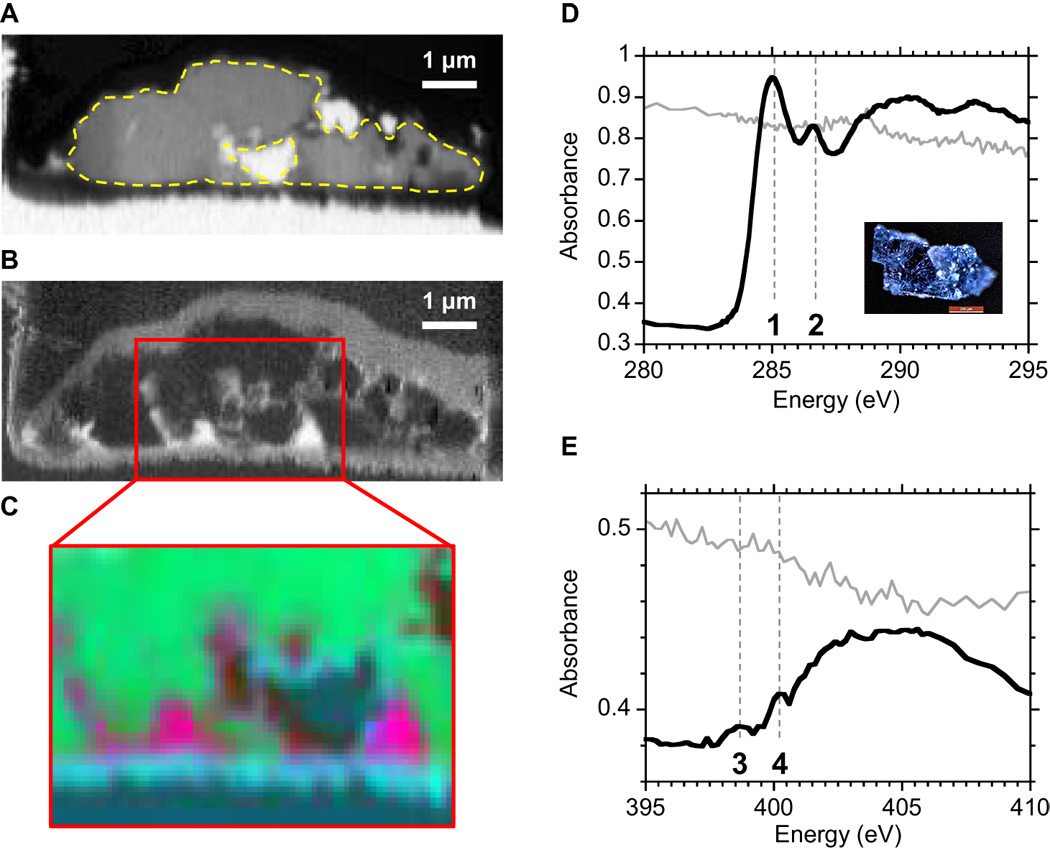Two wayward space rocks, which separately crashed to Earth in 1998 after circulating in our solar system’s asteroid belt for billions of years, share something else in common: the ingredients for life. They are the first meteorites found to contain both liquid water and a mix of complex organic compounds such as hydrocarbons and amino acids.
A detailed study of the chemical makeup within tiny blue and purple salt crystals sampled from these meteorites found evidence for the pair’s past intermingling and likely parents. These include Ceres, a dwarf planet that is the largest object in the asteroid belt, and the asteroid Hebe, a major source of meteorites that fall on Earth.
Researchers enlisted a variety of experimental techniques to explore the samples’ makeup at different scales. The scanning transmission x-ray microscope (STXM) at ALS Beamline 5.3.2.2 was used to perform x-ray absorption near-edge structure (XANES) measurements of the samples’ organic chemical components, including carbon, oxygen, and nitrogen.
The study provides the first comprehensive chemical exploration of organic matter and liquid water in salt crystals found in Earth-impacting meteorites. The study treads new ground in the narrative of our solar system’s early history and asteroid geology while surfacing exciting possibilities for the existence of life elsewhere in Earth’s neighborhood.
There are some other well-preserved crystals from the meteorites that haven’t yet been studied, and there are plans for follow-up studies to identify if any of those crystals may also contain water and complex organic molecules.

Q.H.S. Chan, M.E. Zolensky, Y. Kebukawa, M.Fries, M. Ito, A. Steele, Z. Rahman, A. Nakato, A.L.D. Kilcoyne, H. Suga, Y. Takahashi, Y. Takeichi, and K. Mase, “Organic matter in extraterrestrial water-bearing salt crystals,” Sci. Adv. 4, eaao3521 (2018), doi: 10.1126/sciadv.aao3521.
Adapted from the Berkeley Lab press release, “Ingredients for Life Revealed in Meteorites That Fell to Earth.”